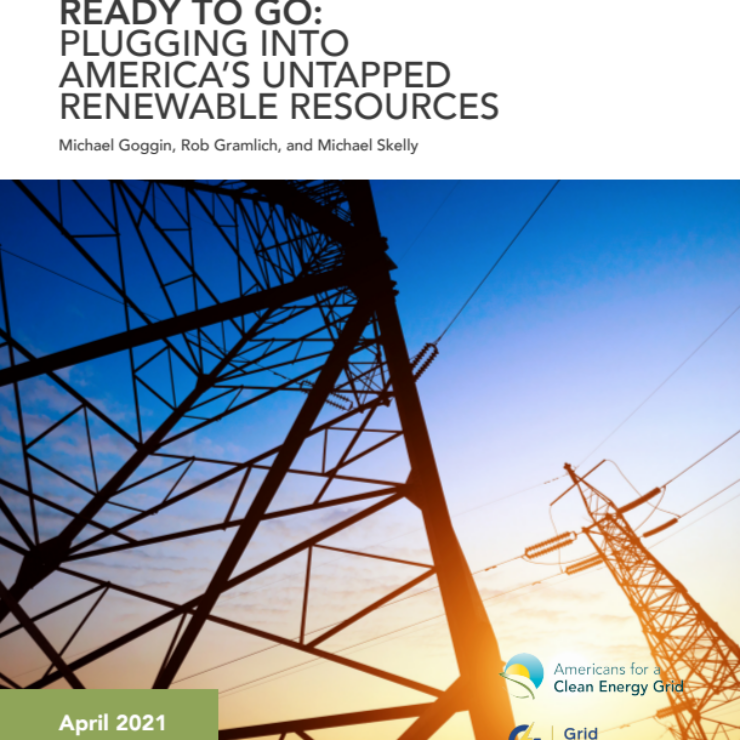team
Rob Gramlich and Jay Casparysponsors
Commissioned by ACEG with support from the Macro Grid Initiative, a project of the American Council on Renewable Energypublished
January 2021Introduction
The time has come for the Federal Energy Regulatory Commission (FERC) to build on its previous orders and strengthen transmission planning through a new nationwide transmission planning and cost allocation rule.
Over the last 25 years, four major FERC orders, No. 888, 2000, 890 and 1000, each made incremental progress building regional transmission infrastructure, moving the industry away from its past balkanized structure with relatively weak connections between utility systems towards a more reliable and efficient system allowing for more regional exchange of power. As we look to the future, much more regional and inter-regional power exchange will be needed for national energy security, reliability, resilience, cost-effectiveness, and economic competitiveness. A decade after Order No. 1000’s issuance, the nation faces new challenges and it is clear that neither the current infrastructure nor the rules governing its development match this need.
Numerous studies, as well as the experiences of regional planning entities, demonstrate that more robust interregional infrastructure is needed to ensure system resilience and reliability, and would yield substantial consumer benefits and help ensure affordable rates
for customers if built. The combination of an aging transmission system and a changing resource mix heighten the need for proactive planning of regional and inter-regional transmission infrastructure. While a large amount of transmission infrastructure built in
the 1960s and 70s is due for replacement, simply rebuilding this infrastructure is inefficient in light of a changing resource mix and shifting demand patterns. By all accounts, wind and solar resources will become a much larger portion of the resource mix in the
future, and electrification of transportation and buildings will substantially increase demand. These trends magnify the benefits of building large regional and inter-regional transmission infrastructure to connect resource rich areas with load centers.
For all of the best efforts of the Commission and regional planning authorities, the current set of transmission regulations have resulted in inadequate levels of infrastructure that have burdened the interconnection process with the task of planning new network facilities — a task that should instead take place in the planning process. Further, existing regulations have created a system that disproportionately yields projects that address only local needs, that address reliability without more broadly assessing other benefits,
or that simply replace old retiring transmission assets with the same type and design despite the potential for larger projects to more cost effectively meet the same needs. While local projects, reliability projects, and asset replacements will continue to be necessary, there is an opportunity to make better use of valuable existing rights of way, install newer technologies as assets are replaced, provide greater transparency and guidance over transmission expenditures, and reconfigure the grid to vastly increase regional and inter-regional delivery capacity. This would improve the cost effectiveness of new transmission investments for customers, reducing congestion, and enhancing reliability.
To achieve these outcomes, the Commission should undertake a comprehensive rulemaking to reform planning, cost allocation, and review of transmission. Reforms designed to ensure adequate, cost-effective investment in transmission infrastructure takes place are
necessary for rates to be “just and reasonable” and consistent with the Federal Power Act’s requirements. The Commission has an obligation to find under Section 206 of the Federal Power Act that current tariffs are unjust and unreasonable, and must be replaced
with new transmission planning, cost allocation, and review guidelines. Reforms to ensure that regional and interregional planning processes better assess future needs, evaluate a full range of solutions, and focus on increasing cost effectiveness of new infrastructure for customers are well within the Commission’s statutory authority, and its mandate to identify and serve the interests of electricity consumers.




